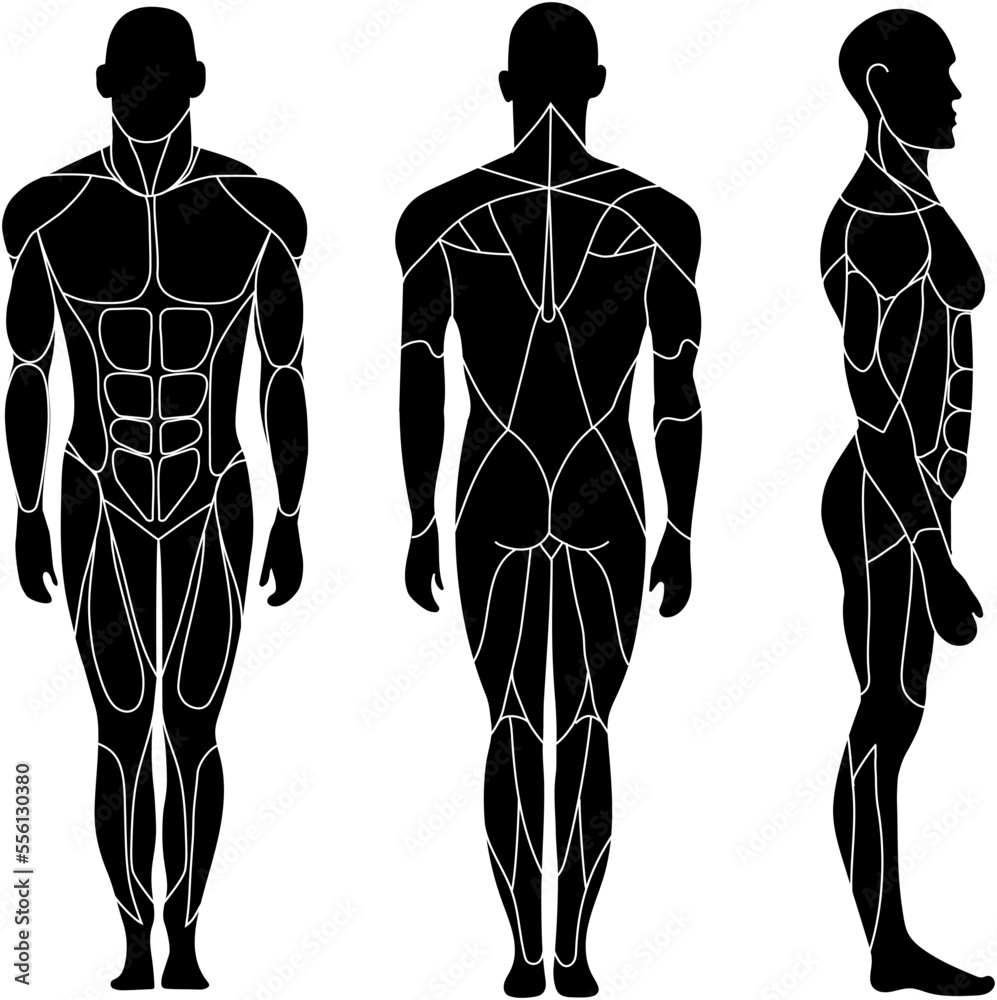Back Rack For Pickup Trucks: Your Ultimate Guide to Enhanced Safety and Functionality pickup.truckstrend.com
Pickup trucks are the workhorses of the automotive world, relied upon by tradespeople, adventurers, and everyday drivers for their unparalleled utility. Whether hauling lumber, transporting tools, or preparing for an outdoor adventure, maximizing a truck’s capabilities often involves adding accessories that enhance safety, functionality, and storage. Among the most crucial of these accessories is the back rack, often interchangeably known as a headache rack or cab guard. Far more than just an aesthetic addition, a back rack is a vital component that protects your truck’s cab, secures your cargo, and expands your vehicle’s versatility. This comprehensive guide will delve into everything you need to know about back racks, from their fundamental purpose to choosing, installing, and maintaining the perfect one for your pickup.
Understanding the Back Rack: More Than Just a Bar
Back Rack For Pickup Trucks: Your Ultimate Guide to Enhanced Safety and Functionality
At its core, a back rack is a protective barrier installed directly behind the cab of a pickup truck, spanning the width of the bed rails. Its primary purpose is to shield the rear window and cab from damage caused by shifting cargo in the truck bed. Imagine a ladder sliding forward during an emergency stop, or a piece of lumber bouncing unexpectedly – without a back rack, your rear window is highly vulnerable, and your cab could suffer significant dents or scratches.
Beyond this crucial protective role, back racks offer a myriad of secondary functions. They provide excellent anchor points for securing loads with straps or ropes, often positioned higher than the bed rails for better leverage. Many designs also feature integrated mounting points for auxiliary lights (such as work lights, off-road lights, or warning strobes), CB antennas, flag mounts, or even serve as a foundation for more extensive ladder rack systems. In essence, a back rack transforms the area behind your cab into a multifunctional zone, enhancing both safety and productivity.
Key Benefits of Installing a Back Rack
Investing in a back rack for your pickup truck yields several significant advantages:
- Superior Cab and Window Protection: This is the undisputed primary benefit. The sturdy frame of a back rack acts as a robust barrier, preventing costly damage to your rear window and cab from loose tools, building materials, or any other cargo that might shift forward during acceleration, braking, or sudden turns.
- Enhanced Cargo Management and Security: Back racks provide numerous tie-down points, often strategically placed for optimal load securement. This allows you to safely and securely transport items like ladders, pipes, lumber, kayaks, or even smaller equipment, preventing them from sliding around or falling out of the bed.
- Versatile Accessory Mounting Platform: For those who work late, off-road, or need specific communication tools, a back rack is an ideal mounting solution. It provides a stable, elevated location for work lights, reverse lights, warning beacons, CB radio antennas, or even light bars, improving visibility and functionality.
- Improved Professionalism and Aesthetics: A well-chosen back rack can significantly enhance the rugged and professional appearance of your pickup. For tradespeople, it signals readiness for work, while for personal truck owners, it adds a touch of custom styling and capability.
- Potential for Integrated Storage: Some back rack designs incorporate or allow for the integration of cross-bed toolboxes, offering secure storage for tools and equipment while maintaining cab protection.

Types of Back Racks: Choosing the Right Fit
Back racks come in various designs and materials, each offering distinct advantages. Understanding these differences is key to selecting the perfect rack for your needs:

- Material:
- Steel: Known for its exceptional strength and durability, steel back racks are typically more affordable and can withstand heavy impacts. However, they are heavier and prone to rust if the powder coating or paint is scratched, requiring regular maintenance.
- Aluminum: Lighter than steel, aluminum racks are corrosion-resistant, making them ideal for areas with harsh weather conditions or for those looking to minimize added weight. While often more expensive, their longevity and reduced impact on fuel economy can justify the cost.

- Design and Style:
- Grid/Mesh Style: The most common design, featuring a full grid or mesh pattern that offers maximum cab protection and numerous tie-down points.
- Louvered/Open Frame Style: These designs offer a more open look, which can improve rear visibility for some drivers while still providing significant protection. They often feature horizontal or vertical bars.
- Integrated Toolbox Racks: Designed to work seamlessly with cross-bed toolboxes, these racks often include mounting points or a specific design to accommodate the toolbox while still protecting the cab.
- Modular/Adjustable Racks: Some back racks offer modular components or adjustability, allowing for customization of accessory mounting points or even conversion into part of a larger bed rack system.
Installation Guide: Getting Your Back Rack Ready
Installing a back rack is a manageable DIY project for most truck owners, though professional installation is always an option for peace of mind.
Tools You’ll Likely Need:
- Socket wrench set (metric and/or standard, depending on the rack)
- Open-end wrenches
- Measuring tape
- Drill and drill bits (if bolting through the bed rails)
- Pencil or marker
- Safety glasses and gloves
General Installation Steps (May Vary by Model):
- Unpack and Inspect: Lay out all components and hardware. Familiarize yourself with the instructions provided by the manufacturer.
- Assemble Components (if necessary): Many back racks come in sections that need to be bolted together before mounting to the truck.
- Position the Rack: Carefully lift the assembled rack onto your truck’s bed rails, positioning it flush against the cab. Ensure it’s centered and aligned properly.
- Secure the Rack:
- Clamp-on: If your rack uses clamps, slide them under the bed rail and tighten the bolts to secure the rack firmly in place. This is typically the easiest method and doesn’t require drilling.
- Bolt-on: If your rack bolts through the bed rail, mark the drilling points precisely. Double-check measurements before drilling pilot holes, then enlarge them to the specified size. Insert the bolts and secure them with washers and nuts from underneath the bed rail.
- Tighten All Fasteners: Once positioned and initially secured, go around and ensure all bolts and clamps are tightened to the manufacturer’s specifications. Do not overtighten, especially with aluminum racks.
- Final Check: Gently push and pull on the rack to ensure it’s stable and secure. Check for proper clearance with the cab, especially if you have a sliding rear window.
DIY vs. Professional Installation: If you’re comfortable with basic tools and following instructions, DIY installation can save you money. However, if you’re unsure, lack the necessary tools, or want guaranteed proper fitment, professional installation by a truck accessory shop is a worthwhile investment.
Important Considerations Before Purchase
Before you make your purchase, consider these factors to ensure you choose the best back rack for your specific needs:
- Truck Compatibility: Back racks are often specific to truck make, model, and year. Verify the rack you’re considering is a perfect fit for your vehicle.
- Existing Accessories: If you have a tonneau cover, bed liner, or toolbox, check for compatibility. Many racks are designed to work with certain tonneau covers (e.g., inside-the-rail covers), but others may interfere.
- Material Choice: Weigh the pros and cons of steel vs. aluminum based on your budget, anticipated use, and desired weight.
- Load Capacity: If you plan to carry heavy items on or against the rack, check its weight rating to ensure it meets your requirements.
- Rear Visibility: While all back racks will slightly obstruct your rear view, some designs (like louvered or open-frame) offer better visibility than full mesh designs. Consider your comfort level.
- Accessory Integration: Plan for any future accessories you might want to mount. Does the rack have pre-drilled holes, specific channels, or a design that facilitates easy accessory attachment?
- Budget: Prices vary significantly based on material, brand, and features. Set a budget but prioritize quality and safety.
- Local Regulations: Check if there are any local laws regarding light placement or overall vehicle dimensions that might affect your choice or installation.
Maintenance Tips for Longevity
To ensure your back rack lasts as long as your truck, follow these simple maintenance tips:
- Regular Cleaning: Wash your back rack regularly, especially after off-road excursions or exposure to road salt, to prevent dirt and corrosive materials from accumulating.
- Inspect Fasteners: Periodically check all bolts, nuts, and clamps to ensure they remain tight. Vibrations from driving can loosen them over time.
- Check for Damage: Inspect the rack for any signs of rust (on steel racks), cracks, or bends, particularly after carrying heavy loads or impacts.
- Touch-Up Paint: For steel racks, promptly touch up any scratches or chips in the powder coat with rust-inhibiting paint to prevent corrosion from spreading.
Common Challenges and Solutions
While back racks offer immense benefits, a few challenges can arise:
- Interference with Tonneau Covers:
- Challenge: Some back racks and tonneau covers are incompatible, as they both use the bed rails for mounting.
- Solution: Look for "tonneau-compatible" back racks or those that mount differently (e.g., into stake pockets). Many popular brands offer specific adapters or designs for this purpose.
- Reduced Rear Visibility:
- Challenge: The presence of a back rack, especially full mesh designs, can reduce visibility through the rear window.
- Solution: Opt for louvered or open-frame designs. Most drivers quickly adapt to the slight reduction in visibility, using side mirrors more frequently.
- Wind Noise:
- Challenge: Some rack designs can create minor wind noise at highway speeds.
- Solution: This is typically minimal. Choosing a well-designed rack from a reputable manufacturer can mitigate this.
- Rust (for Steel Racks):
- Challenge: Scratches in the powder coating of steel racks can lead to rust.
- Solution: Regular inspection and prompt touch-up painting of any damaged areas will prevent rust from spreading.
Back Rack Price Table (Estimates)
Please note that prices are estimates and can vary significantly based on brand, specific features, material quality, and retailer. Installation costs are additional if not doing it yourself.
| Feature/Type | Material | Key Features | Typical Price Range (USD) |
|---|---|---|---|
| Basic Grid/Mesh Rack | Steel | Standard cab protection, multiple tie-down points, durable powder coat | $250 – $500 |
| Premium Louvered Rack | Aluminum | Lightweight, corrosion-resistant, improved rear visibility, sleek design | $500 – $900 |
| Integrated Toolbox Rack | Steel | Combines cab protection with mounting points for cross-bed toolboxes | $400 – $750 |
| Modular/Adjustable Rack | Aluminum/Steel | Highly versatile, customizable for various accessories and load types | $600 – $1200+ |
| Heavy-Duty Work Rack | Steel | Robust construction, higher load capacity, often with integrated grab handles | $700 – $1500+ |
| Installation (DIY) | N/A | Requires basic tools and time | $0 |
| Installation (Professional) | N/A | Ensures proper fitment, often includes warranty on labor | $100 – $300 |
Frequently Asked Questions (FAQ)
Q: What is the difference between a back rack and a headache rack?
A: They are essentially the same thing. "Headache rack" is a common colloquial term referring to its primary function of preventing a "headache" (or injury) from shifting cargo. "Back rack" or "cab guard" are more formal descriptive terms.
Q: Will a back rack interfere with my tonneau cover?
A: It depends on the design of both the back rack and the tonneau cover. Many back racks are designed to be compatible with certain types of tonneau covers (especially "inside-the-rail" designs). Always check product specifications or consult with a retailer to ensure compatibility.
Q: Can I install a back rack myself?
A: Yes, most back racks are designed for DIY installation with basic hand tools. Manufacturers provide detailed instructions. However, if you’re uncomfortable, professional installation is a safe and convenient option.
Q: Do back racks reduce fuel economy?
A: Any addition to a vehicle can theoretically affect fuel economy, but the impact of a back rack is generally minimal, especially compared to full-height bed racks or large roof racks. Its relatively low profile causes little additional drag.
Q: What material is best for a back rack?
A: It depends on your priorities. Steel is more affordable and offers maximum strength for heavy-duty applications but is heavier and can rust if not maintained. Aluminum is lighter, corrosion-resistant, and often more aesthetically refined, but typically costs more.
Q: Are back racks universal, or do I need one specific to my truck?
A: Back racks are generally not universal. They are designed to fit specific truck makes, models, and years, accounting for bed rail dimensions and cab contours. Always ensure you purchase one that is compatible with your specific vehicle.
Q: Do back racks protect the rear window from breakage?
A: Yes, that is one of their primary functions. The strong frame or mesh acts as a barrier, preventing items from directly hitting and shattering the rear window.
Conclusion
A back rack for your pickup truck is more than just an accessory; it’s an investment in safety, functionality, and the longevity of your vehicle. By providing crucial cab protection, enhancing cargo management, and offering versatile mounting options for additional equipment, a well-chosen back rack significantly expands the utility of your truck. Whether you’re a professional tradesperson, an avid outdoors enthusiast, or simply a truck owner who values preparedness, understanding the benefits and options available will enable you to select the perfect back rack, ensuring your truck is ready for any challenge the road (or job site) throws its way.



